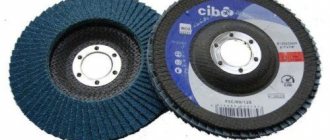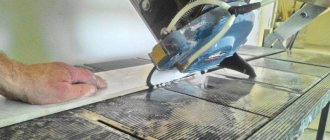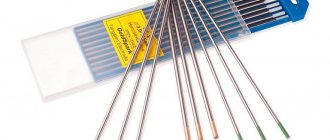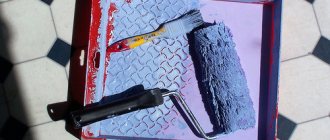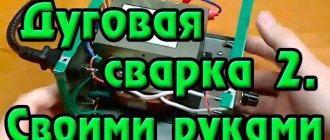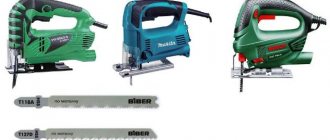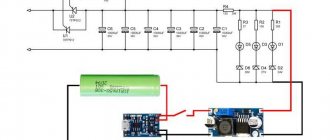Features of the concept
The new invention proposes to connect two steel parts by gluing. This uses strong adhesive. When it dries, it resembles a weld in appearance, but during action the surfaces do not heat up, they remain in an unchanged state of aggregation. The consistency is ordinary plasticine or pliable clay. The base is epoxy resin, which has excellent adhesive properties and is often used as patches on any material, including metal fixtures. This is a cylindrical block, the epoxy is in the center of this cylinder, and along its edges there are special pastes that promote accelerated hardening. Dry steel filings and sulfur are also added to increase strength. Despite the fact that the method is used quite often, it will not replace a welding machine in terms of the result and the strength of the metal parts being connected by hot welding. Glue is more likely to be used in domestic conditions, as well as for temporary repairs. Such connections do not allow them to bear a heavy load and operate for a long time.
Composition and release forms
Cold welding creates a strong connection between surfaces and can be used even in hard-to-reach places. The composition of the adhesive composite substance includes:
- Epoxy resins.
- Hardener.
- Reinforcing additives.
The strength of the adhesive material is increased by adding plasticizers, metal shavings, and ceramic powders. Glue is available in two types:
- Liquid welding . This is a two-component composition. One of the tubes contains glue, the other contains hardener.
- Plastic glue . The resin and hardener are in one tube and separated by a layer of film. Thickeners give the composition the desired consistency. In density it resembles plasticine. The two-component composition is better stored. Each time you can squeeze out the right amount of substance from the tubes. Plastic glue has a short shelf life after opening the package. It must be used quickly.
For different types of materials to be welded, different adhesive compositions are used.
Advantages of epoxy resin adhesive
- Sufficient adhesive strength.
- Visually consistent with a neat weld seam.
- Affordability, much less expensive than the device.
- No need for electricity or massive equipment.
- You don't need to have a lot of special skills or education, just a little practice.
- Great for household repairs and small temporary problems such as leaking pipes.
- Can be used for parts with holes and for solid surfaces.
- Even if the element being glued is subject to small forces, internal or external pressure, the work can still be carried out.
- Does not require preliminary dismantling of the system element. If you plan to weld parts of the water supply, the pipes do not have to be removed; they can be patched on site.
- Since the product will not heat up during the process, it will not be deformed, and nearby parts of the system will not be damaged in any way.
Repair of heating pipes using cold welding
Many have encountered such a problem when a leak may form in a pipe running through a house or apartment. But not everyone knew that this problem could be dealt with quite simply. If the welder is experienced, he is more likely to use arc welding. And in the absence of special skills, cold welding for metal is what we need. For these purposes we use glue for metals with heat-resistant properties.
Sequence of actions to eliminate a leak:
- The water supply tap is turned off;
- We wait until water stops flowing from the problem area;
- The surface of the pipe is cleaned with emery plaster;
- Cut off a piece of adhesive to the required size;
- It is kneaded to ensure complete mixing;
- Next, the leak area is sealed;
- Then you need to give time for the weld to completely harden;
- To maintain the aesthetic condition of the pipes, the section is sanded and returned to its original form.
Remember that if the composition of the pipes is different, you need to purchase glue as a cold weld for foreign metal. Take this feature into account, otherwise the repair will not bring the desired result. And to troubleshoot plastic pipes, they use a special mastic, in the form of cold welding for plastic.
If it is not possible to carry out all the full work, and only glue is at hand. Don’t be afraid to apply it to an unprepared and damp surface; the only condition is that the glue, in its composition, must be suitable for such use. Sometimes situations arise when a leak needs to be eliminated here and now; when developing welding, this feature is taken into account.
Types: which cold instant welding is better for metal and how to use it
There are two options depending on the composition:
- one-component - it is cheaper, but it cannot be stored open, that is, one tube must be used at a time, which is important for simultaneous large amounts of work;
- two-component - less budgetary, but it is suitable for long-term storage.
The second, frequently used classification is based on the application of the product. There are different types of glue:
- Universal. It, as the name suggests, fits many exterior surfaces and perfectly bonds wood, plastic, glass and much more.
- Automotive. It is often used in car dealerships and is also useful for car enthusiasts at home. Ideal if you need to fix and hide a crack or a strong scratch. It can be used both on the body and on internal parts, but for the former it is more effective.
- With a high rate of adhesion, that is, adhesion of surfaces at the molecular level. They are used when the seam will be subject to temperature changes and the structure will experience average loads.
- Heat resistant. The glue is suitable for products that are heated to 1.5 thousand degrees or cooled to minus 60.
- Moisture resistant. A good cold weld for metal for plumbing purposes should not only repel water, but also perform all its functions directly with constant contact with moisture.
Narrower target profiles may also be identified. Another classification occurs according to the personal qualities of the composition. There are liquid pastes and thicker ones. The first is usually two-component, that is, it consists of epoxy and hardener, which are evenly mixed into a homogeneous mass as you press on the syringe plunger. However, experienced “cold welders” do not recommend doing this; they believe that before use it is necessary to mix both parts in a separate container and then apply it to the seam. The second option - dry welding for metal - is a bar resembling plasticine. It must be kneaded, increasing its plasticity, and then applied to the joint. Professionals also distinguish between glue:
- point;
- suture;
- T-bar;
- butt;
- when gluing with shear.
These subtypes completely repeat the types and techniques of welding work.
Process video
Manufacturers and brands
We list popular brands and their products.
Abro Steel
Made in the USA. Plastic composition packed in a cylindrical tube. They can be used to glue car parts, including the body, radiator, fuel tank, or simply be used at home to seal pots. Taped bowls and pots should not be used for cooking.
Cold welding Titan
Based on independent testing, it can withstand a force of 1686N, an average shear stress of 4.04mPa, a shear stress force of 438N and a tensile stress of 9.5mPa. Can join metals, ceramics, wood and plastics. It can be classified as a universal species that is resistant to destructive environments and can withstand temperatures up to +130°C.
Moment Epoxylin
There are both one- and two-component formulations. They can join cast iron alloys and other materials. Resistant to mechanical and chemical influences. The formed seam can be sanded and painted.
REMplast
The product is designed to eliminate leaks. Can be applied to pipes that are under water pressure. The composition contains oligomers and amine resins. Allergy sufferers should exercise caution when working.
Poxipol
Strongly connects different materials, which after gluing can be subject to mechanical processing. After hardening, the seam withstands moisture and destructive environments, including acids and fuel. Can be used at home. Withstands exposure to high temperatures, but not more than +120°C. Available in small containers, which is not always convenient for large repairs.
Mastix
Practical, easy-to-use adhesive. Performs well at high and sub-zero temperatures. The connected part can be operated in the temperature range from -60°C to 150°C. It takes a relatively long time to dry and may form clumps.
Diamond
- Diamond. A universal composition for connecting small elements. After drying, the glue becomes brittle.
- Diamond Press. Designed specifically for car repairs.
More about the connection method
It involves the use of special pastes that are applied to surfaces and harden, forming a seam identical to the natural one. In many cases this is only a temporary measure, but is often the only option, for example when working with two materials of different structures. Let's look at the important aspects of this method - where it is used, how to use it.
Cold Joining: What the Best Welding for Metal Looks and Works
The main process is chemical in nature. The two components come into contact and, under the influence of oxygen, instantly react and are firmly bonded. This predetermines the separate storage of the two mixtures and their connection only at the moment of application (or a few seconds before that). Therefore, in the construction department you can find two options for liquid glue:
- two flasks, which, when pressed on the syringe plunger, release two streams, they mix into one;
- separate containers that contain chemicals must be combined in a cup.
Professionals advise buying the second variety.
Cold (soft) metal welding: what it is, the principle of operation, how it can be used and correctly applied the adhesive composition
If you take universal glue, then its use is limited to your imagination. But for more specific categories, the to-do list is limited. Here are classic application examples:
- wires and other mechanisms and cables conducting electricity;
- eliminating holes in containers that hold liquids, such as a gas tank;
- plumbing work - installation of holes in the pipeline or small cracks in the mixer;
- car body and some other spare parts;
- plastic;
- carpet, linoleum and other floor coverings;
- ceramics, stone, glass.
Which cold welding to choose?
VIEW Cold welding on AliExpress →
Due to the huge range, it can be difficult to identify an obvious leader. Even studying the instructions for a person who has little knowledge of directions will not bring clarity to the situation. To make it easier for you to resolve the issue, we bring to your attention the top 3 best cold metal welding tools that you can find on the market in 2021.
1) Weicon VA 110
| Price | ★★★ (3.0 out of 5.0) | Overall attractiveness ★★★★★ 4.0 |
| Seam strength | ★★★★★ (5.0 out of 5.0) | |
| Reviews | ★★★★★ (5.0 out of 5.0) |
Supplied in 60 gram tubes. The cost of one such tube reaches 3,500 rubles, which makes cold welding one of the most expensive options for the average consumer.
Among the advantages, we note the NSF certificate of environmental friendliness + safety of components for human health, high strength of 20 N per square millimeter and high polymerization rate. Disadvantages - 24 hours until complete hardening and the need to apply a thin layer (up to 0.02 centimeters), which requires extreme care from a person during the work process.
2) Weicon RK-1500
| Price | ★★★★ (4.0 out of 5.0) | Overall attractiveness ★★★★★ 4.5 |
| Seam strength | ★★★★★ (5.0 out of 5.0) | |
| Reviews | ★★★★★ (5.0 out of 5.0) |
The best option in terms of price/quality ratio. Works with both light and heavy metals. Can be used for gluing elements joint to joint.
The glue works well on smooth surfaces + it can be applied on both sides, with a total thickness of up to 1 millimeter. The disadvantages are accuracy during application due to the two-component composition, 100% strength only after a day and a high fluidity rate of the activator. Price on the market from 1,200 rubles.
A practical example of the use of cold welding with an explanation of the nuances of use for different materials:
3) Poxipol “Cold welding”
| Price | ★★★★★ (5.0 out of 5.0) | Overall attractiveness ★★★★★ 4.0 |
| Seam strength | ★★★★ (4.0 out of 5.0) | |
| Reviews | ★★★★ (4.0 out of 5.0) |
In terms of price, the most affordable option is from 600 rubles. The weld hardens quickly. The tear test can be carried out after 10 minutes, and for full use a couple of hours of hardening of the seam will be enough.
Among other advantages, we note resistance to aggressive environments and increased adhesion rates. Disadvantages of the product - polymerization 24 hours after use, it will not work for joint welding, and does not perform well in small cracks and overlapping parts.
Other options worth considering include Strong steel stick renewal composite, EpoximaxX and Bison Super Glue Gel. The latter refers to general-purpose cold welding, and therefore, when gluing glass, wood, plastic and other household materials, it will work with a bang.
In any of the presented options, there are detailed instructions on how to use cold welding with a description of the technological nuances of using the current adhesive substance.
How to use cold dry welding for metal: principle of operation and method of application
We offer instructions that contain standard steps. Please note that depending on the individual characteristics of the product being glued, additional factors may arise. Classic stages:
- Identifying the object and then the exact location of the damage. If a water pipe leaks due to wear and tear, as well as when the car body rusts, several spots may appear. You need to detect them immediately, otherwise it will take two to three times longer, since the procedure can be repeated only after complete drying.
- If there is liquid or other contents in the container, it must be disposed of. Wires – de-energize.
- Cleaning the surface to be treated, removing dirt, and then degreasing.
- If you purchased a product that comes in two different flasks, squeeze out a small amount of paste from both and then mix them until smooth. When packaging in a flask with two connecting vessels, this point can be skipped.
- If you have two different parts, place the mixture on the joint, and then quickly and firmly press the two parts.
- In the case of a small hole, take and knead a small piece with your fingers, and then apply it to the outside.
- To apply a metal patch, you need to do the same as in the fifth stage, and then attach the plate on top.
The technical characteristics of any cold welding for metal are written on the packaging. It's worth looking at the drying time there, as it varies among manufacturers. But we recommend waiting an hour. During this time, all processes will take place. After this, you can begin sanding and finishing, especially if decorative work is required, such as painting.
Welding rules for metal
For cold metal welding to be effective, instructions and rules are followed unquestioningly. Let's look at a simple example of repairing a car radiator. Since glue is successfully used for sealing pipes filled with water, draining the liquid from the spare part is not necessary. Let's consider a detailed algorithm that should be followed so that cold gluing of metal is not in vain:
- First of all, prepare the surface that will be welded. For such purposes, sandpaper is used. The surface is cleaned, eliminating the presence of rust and dirt. Cleaning occurs until a visible surface of the metal itself with traces of emery plaster is formed;
- Next, the cleaned surface is dried if necessary. You can use a hairdryer, this will speed up the process. We said earlier that a wet surface is not an obstacle, but for the best effect and quality of the connection, it is better to avoid this;
- Then the area to be sealed must be degreased. The standard solution, acetone, copes best with this task. It will thoroughly remove even minor signs of greasy marks;
- Now it's time to make the composition itself. The required piece of cold glue is cut with a knife. The cut is made exclusively across the cylinder, this is done to maintain the correct amount of epoxy resin and hardener. It is worth starting to knead this piece thoroughly, as a result a homogeneous and soft mass is formed. To protect your hands from sticking and possible harmful effects, you can use special gloves, previously soaked in water.
Other types of glue
Let's talk in more detail about special products designed for gluing other materials.
For different plastics
Most often it has a household purpose; it is excellent for repairing basins and buckets, cracks in plastic windows, balcony and interior doors, as well as interior cladding parts and outdoor furniture.
For linoleum
It is also suitable for rubber. It is very popular in construction and renovation because it solves the issue of laying flooring. This material is more durable than standard double-sided adhesive tape.
Tips and tricks
- buy the product in strict accordance with the intended use, that is, for its intended purpose;
- check on the packaging what temperatures the seam can withstand;
- for emergency repairs, you can first use instantly drying, but less stable adhesives, and then, on top, more durable ones;
- If you need to remove the hardened composition, use a solvent or acetone.
In the article, we described universal instructions on how to properly use, work with cold dry welding and use it for metal, and paid attention to strength and scope of application.

